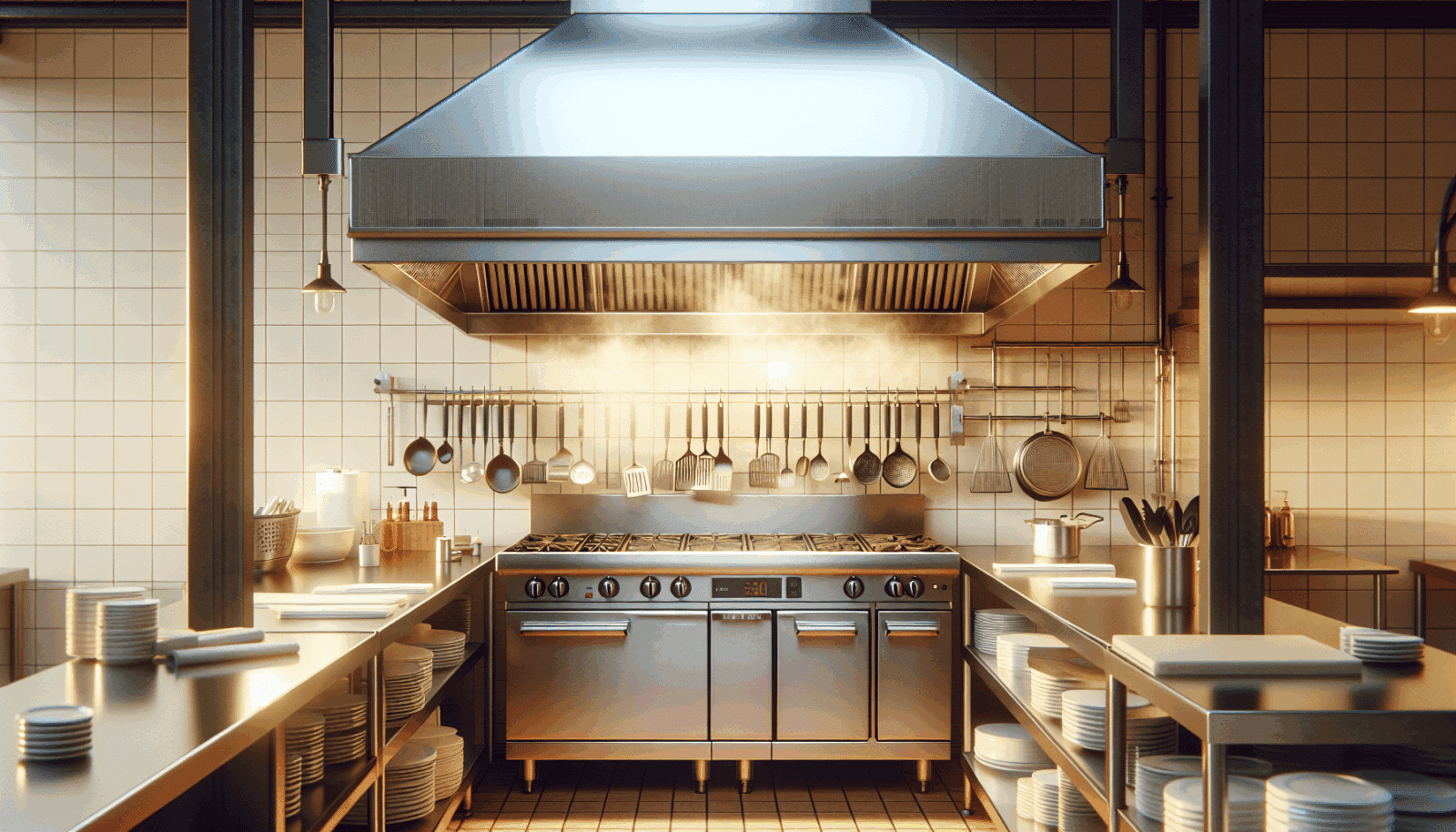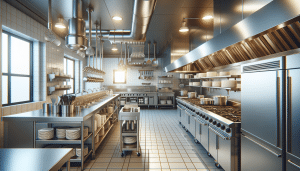Keeping your kitchen’s hood Filter clean is not just about maintaining a pristine cooking space; it’s about ensuring the safety and efficiency of your kitchen. At Utah Hood Cleaning, we understand the challenges homeowners face in keeping up with this essential task. That’s why we’ve crafted this comprehensive guide to help you navigate the complexities of kitchen hood filter cleaning, ensuring your home remains a safe and welcoming space for cooking and gathering. Whether you’re a seasoned chef or a home cooking enthusiast in Salt Lake, Davis, or Utah County, this guide is tailored to make your kitchen hood maintenance a breeze.
The Importance of Regular Hood Filter Cleaning
Imagine your kitchen hood as the lungs of your kitchen. Just as lungs filter air, your hood filter traps Grease, smoke, and other airborne particles, preventing them from spreading throughout your kitchen. However, over time, these particles accumulate, reducing the efficiency of your hood and posing a fire hazard. Regular cleaning ensures your kitchen remains a safe environment for culinary exploration, not to mention it helps to extend the lifespan of your hood and maintain its optimal performance.
Moreover, a clean hood filter contributes to better air quality in your kitchen, reducing the risk of respiratory issues and creating a more pleasant cooking experience. At Utah Hood Cleaning, we emphasize the significance of routine maintenance to prevent costly repairs or replacements down the line.
Understanding Your Hood Filter Type
Before diving into the cleaning process, it’s crucial to identify the type of hood filter you own. The most common types include stainless steel, aluminum, and charcoal filters. Each material requires a slightly different approach to cleaning, which could impact the tools and cleaning agents you need to use. Stainless steel filters, for example, are known for their durability and resistance to rust, making them a popular choice for many homeowners.
Aluminum filters, while also durable, can be more susceptible to corrosion if not properly maintained. Charcoal filters, on the other hand, are designed for recirculating hoods and must be replaced rather than cleaned. Recognizing your filter type is the first step towards ensuring its longevity and performance.
DIY Cleaning Tips
Cleaning your kitchen hood filter doesn’t have to be a daunting task. In fact, with the right tools and a bit of elbow grease, you can achieve professional-level results from the comfort of your own home. Start by removing the filter from the hood and soaking it in a mixture of hot water and a degreasing agent. This will help to loosen the grease and grime, making it easier to scrub away the buildup.
After soaking, use a non-abrasive scrubbing brush to gently clean the filter, paying close attention to the crevices where grease can accumulate. Rinse thoroughly with hot water and dry completely before reinstalling the filter. For stubborn stains, consider using a baking soda paste as a natural, effective cleaning solution. Regular DIY cleanings can significantly reduce the need for professional Services, saving you time and money in the long run.
When to Seek Professional Help
While DIY cleaning is effective for regular maintenance, there are times when professional help is necessary. If you notice persistent odors, decreased ventilation efficiency, or visible damage to your filter, it’s time to call in the experts. Professional cleaners have access to industrial-strength cleaning agents and tools that can tackle even the toughest grease buildup.
Additionally, professionals can perform a comprehensive inspection of your hood system, identifying any potential issues before they become major problems. At Utah Hood Cleaning, we specialize in thorough, efficient cleaning services that keep your kitchen running smoothly. Don’t hesitate to reach out for assistance, ensuring your hood system is in top condition.
Avoiding Common Mistakes
When it comes to cleaning hood filters, there are a few common pitfalls to avoid. First and foremost, never put aluminum filters in the dishwasher. The harsh chemicals and high temperatures can cause corrosion and damage. Similarly, using abrasive sponges or brushes can scratch and deteriorate the filter’s surface, compromising its effectiveness.
Another mistake is neglecting the cleaning schedule. Procrastination can lead to an accumulation of grease and particles, making the cleaning process more challenging and increasing the risk of fire hazards. Stick to a regular cleaning routine to ensure your kitchen remains a safe and efficient space.
Maintaining Your Hood Filter
Maintenance extends beyond routine cleaning; it involves regular inspections and timely replacements when necessary. Check your hood filter monthly for any signs of wear and tear, such as rust or holes. These indicators mean it’s time for a replacement to maintain your kitchen’s air quality and safety.
Additionally, adopting habits that minimize grease buildup can prolong your filter’s lifespan. For instance, using lower cooking temperatures and cleaning splatters immediately can reduce the amount of grease that reaches the filter. Simple adjustments to your cooking habits can make a significant difference in maintenance requirements.
Environmental Considerations
As we become more conscious of our environmental impact, it’s important to consider eco-friendly cleaning methods for your hood filter. Opting for natural degreasers, like a mixture of vinegar and baking soda, can be just as effective as chemical solutions without the harmful environmental footprint.
Furthermore, regular maintenance reduces the need for harsh chemicals and prolongs the lifespan of your filter, leading to less waste. At Utah Hood Cleaning, we’re committed to offering sustainable cleaning solutions that protect both your kitchen and the planet.
The Professional Cleaning Process
When you choose to work with Utah Hood Cleaning, you’re ensuring a thorough and professional clean for your kitchen hood filter. Our process begins with a detailed inspection to assess the condition of your filter and identify any areas that require special attention. We then use a combination of hot water soaking, degreasing agents, and manual scrubbing to remove even the most stubborn grease and grime.
Finally, we rinse and dry your filter meticulously before reinstalling it, guaranteeing a seamless and efficient operation. Our experienced technicians are equipped to handle filters of all types and sizes, ensuring your kitchen’s air quality and safety are restored to their optimal levels.
5 Essential Maintenance Tips
- Regular Inspections – Check your hood filter monthly for any signs of damage or excessive grease buildup. Regular inspections can catch issues early, preventing more serious problems.
- Clean Spills Immediately – Tackling grease and splatters right after cooking can significantly reduce the amount of grease that your hood filter needs to handle.
- Use Appropriate Cleaning Agents – Depending on your filter’s material, certain cleaning agents may be more effective and safer to use. Always choose the right cleaner to prevent damage.
- Avoid Harsh Chemicals – Whenever possible, opt for natural degreasers to minimize your environmental impact and protect your filter’s integrity.
- Professional Cleaning Schedule – While regular DIY cleaning is necessary, scheduling professional cleanings periodically can ensure deeper issues are addressed, keeping your system running efficiently.
Conclusion
Maintaining your kitchen’s hood filter is essential for safety, efficiency, and longevity. By following these guidelines, you can ensure a clean and safe cooking environment for you and your loved ones. For assistance or further information, don’t hesitate to Contact Us at Utah Hood Cleaning by phone at 801-853-8155 or Request a Free Quote. Your kitchen’s wellbeing is our top priority.




